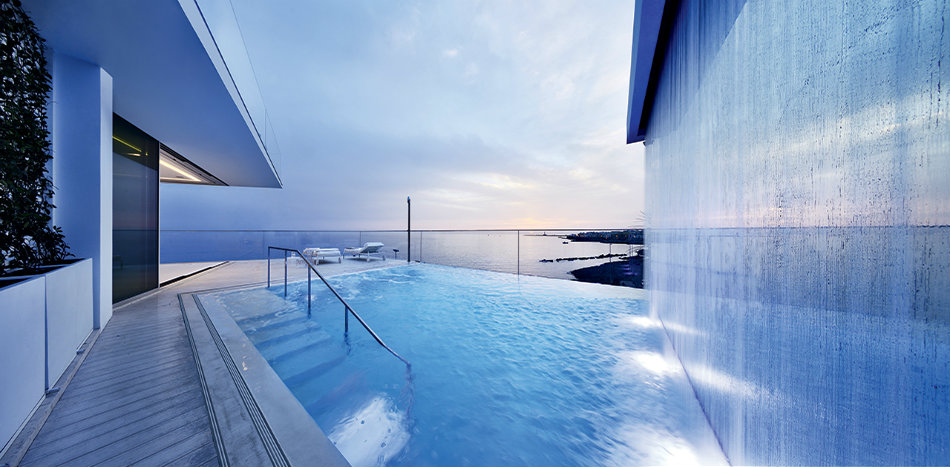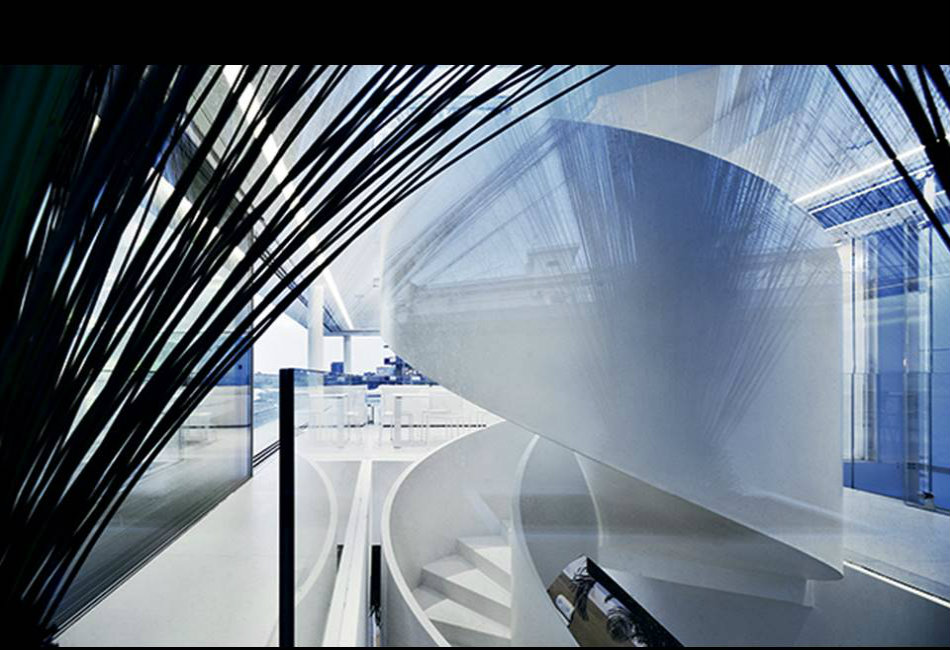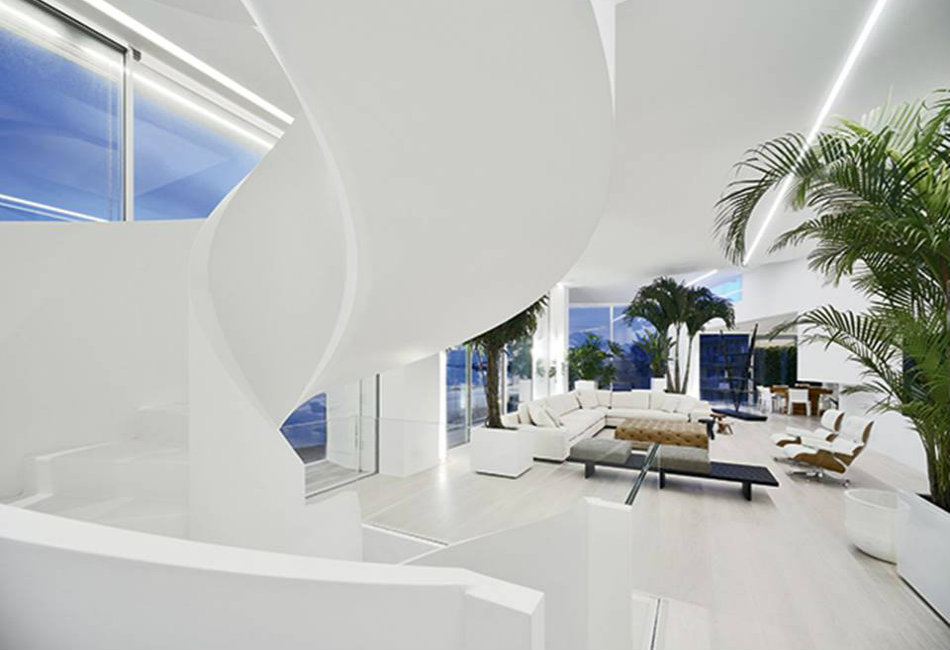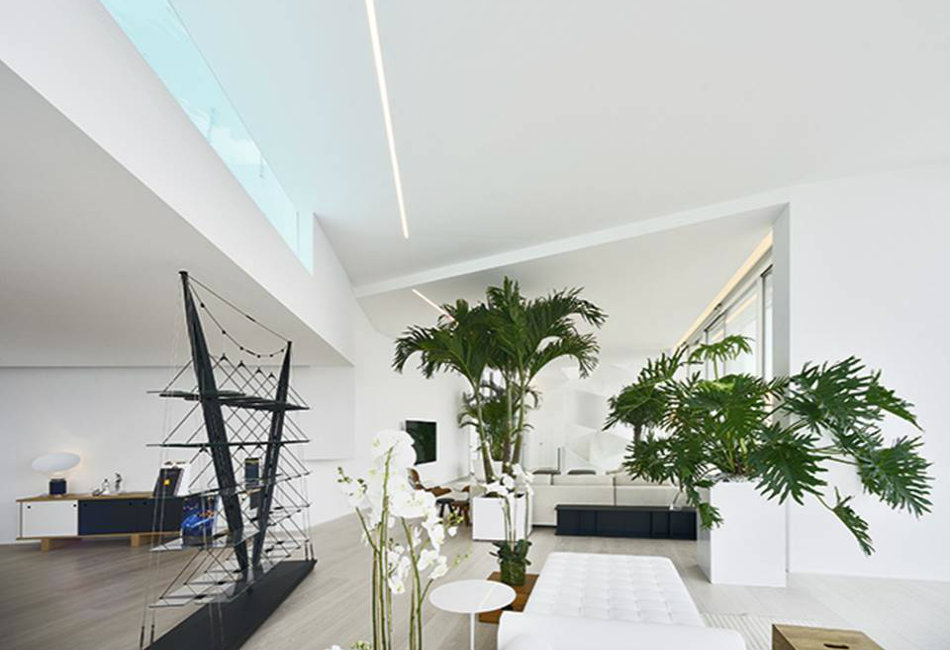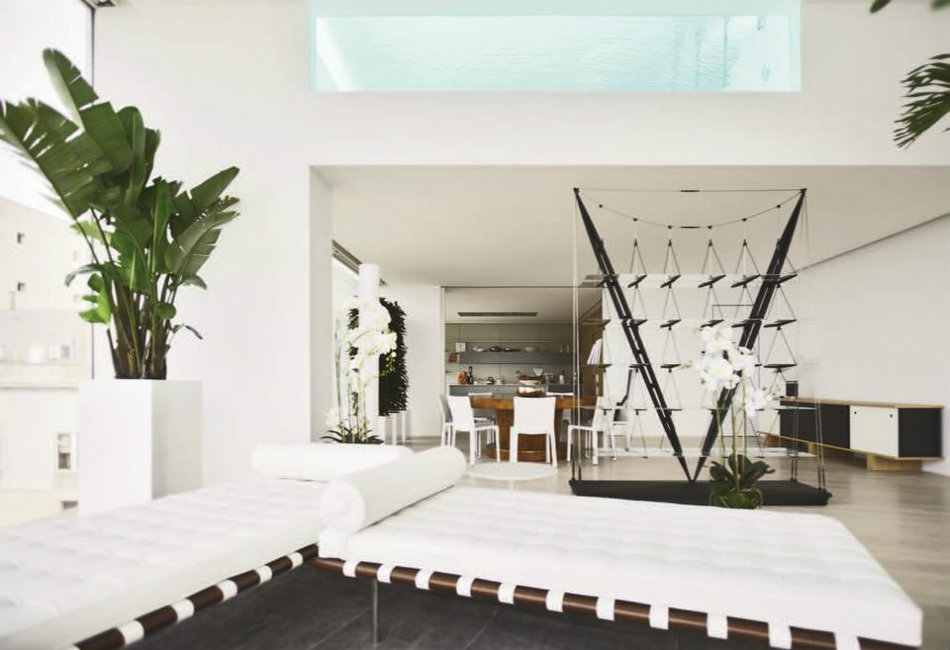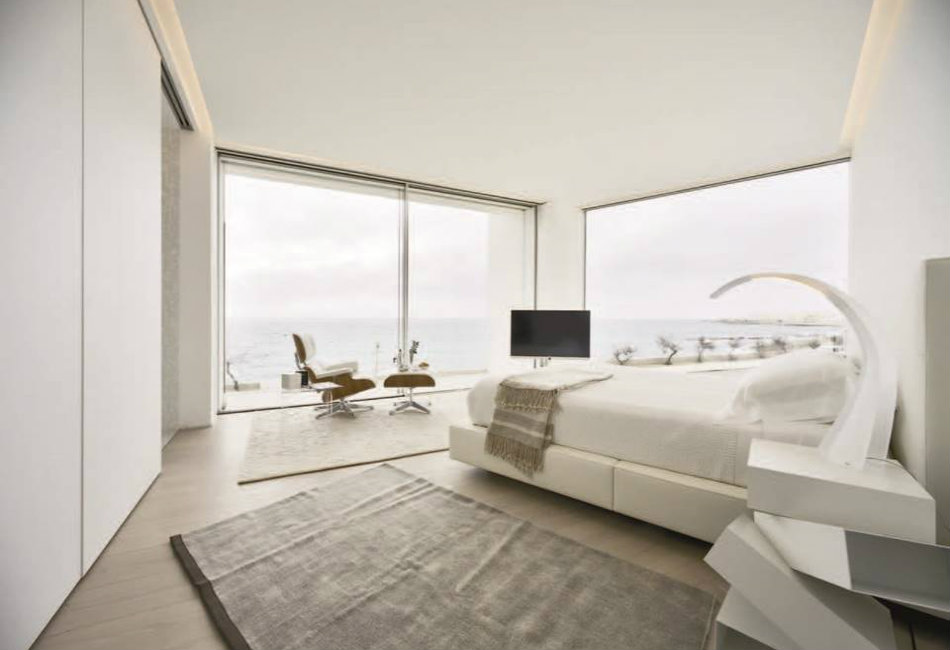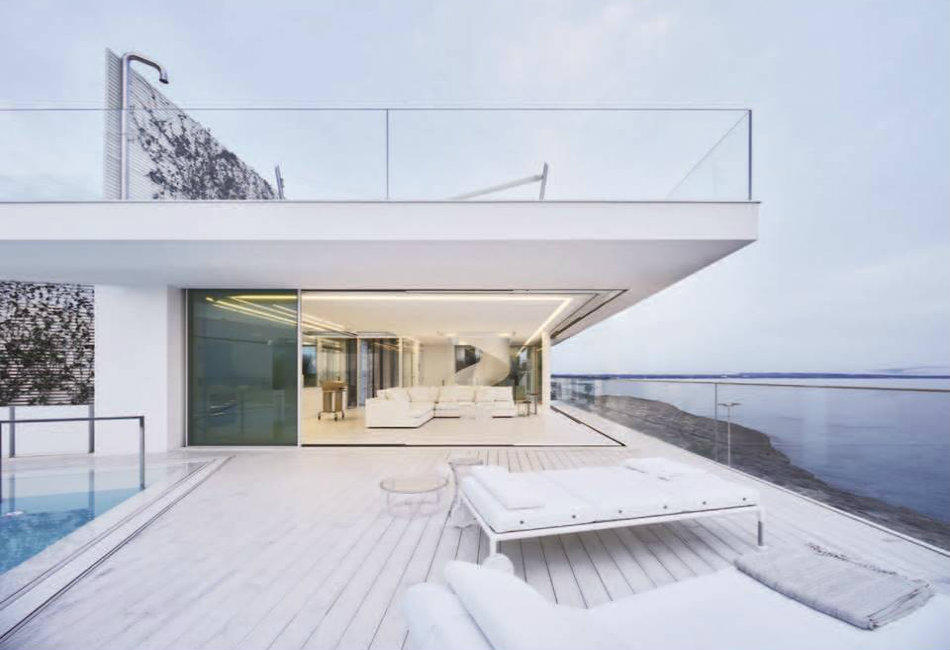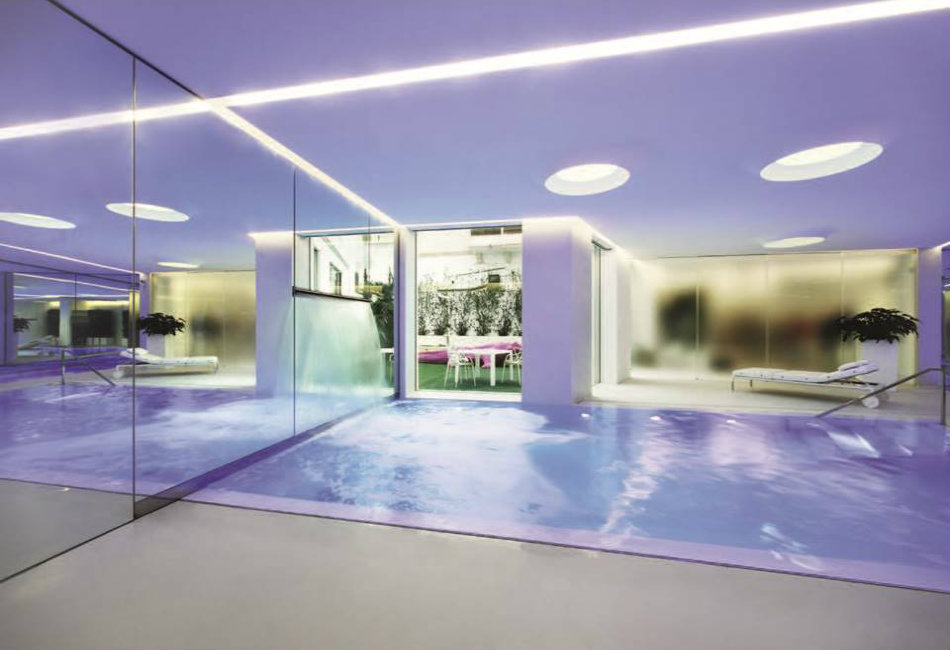This architecture that thrives on open space, white, lucid surfaces, springs from the place where it is anchored, at the extremity of the new Gallipoli. “We are 12 meters away from the Ionian Sea, on an irregular lot that embraces the stunning visual cone of the sun at sunset, and a series of views of the old city, with its splendid maze of little streets, houses and churches, of great historical value,” says Ludovica Serafini.
The environmental qualities of the context had to be exploited, inspiring the whole project: three years of construction with specialized work teams, imported from afar. “We are used to working on a zero-km basis, reducing waste and striving for visual immediacy, both in design and architecture, divesting the object of any non-intrinsic values; but in this case the need for technical isolation of the house from the water was so complex that it required two levels of excavation with respect to the street level, using materials and workers not from this zone.”In the definition of a contemporary habitat of high quality, which could also become an architectural and urban reference point, Palomba + Serafini have made explicit and radical choices regarding the existing structure, a small house with an L-shaped layout that had been repeated renovated and altered.
The sculptural white helical staircase starts here, cutting through and connecting all the levels, freed as much as possible from structures and partitions, for a perceptive effect of dematerialization, air and lightness, all the way to the terrace.
At the first level, the bedrooms are ample spaces with their own bathrooms, while the main room is closed by a full-height corner window for a view of the sea. The second level contains a fluid sequence of living spaces, with a two-story zone, conceived as a greenhouse with large plants inserted at strategic points, connected to the super-tech kitchen island that conceals, behind cabinets, a specially designed super-hood for frying, custom-made for this house.
From the terrace level one ascends to the solarium at the top, screened by a veil of protection from wind and sunlight. “Light is the main protagonist of this project, the raw material that sculpts the volumes and redesigns them with a game of sharp shadows and oblique perspectives. The choice of using large glazings – together with small partitions in place of the traditional pillars – on which the light is projected with effects of depth, has made it possible to control and shape the luminous impact.
Light is a great resource, but it can also be the enemy in the South: violent during the summer but very precious in the winter, when the climate is very humid. The study of air currents became an opportunity in this sense, because with fluid circulation the house-boat (though entirely automated) can thrive on natural air flow for much of the year, without relying on air conditioning. Paradoxically, when the clouds are moving and the house seems to join in their dance, you could almost get seasick.”
Actually, the installation of semi-opaque curtains helps to protect privacy while conserving views: they become opaque when special lights are projected from the outside, while from the inside the landscape is still visible. “This too is a sign of contemporary life,” Ludovica says. “The clients wanted a work of architecture that would have a strong but not imitative relationship with the territory. Together, we chose a range of materials to bring out the chromatic impact of whites, vibrating with light and its reflections.”
The furnishings complete this domestic atmosphere: a few essential custom pieces, of contemporary or historic design. “After all, it remains a house made of sea and nature. And large functional spaces that coincide with the life of the people who live here. Because making architecture is always a journey. Inside ourselves, and inside others.”
